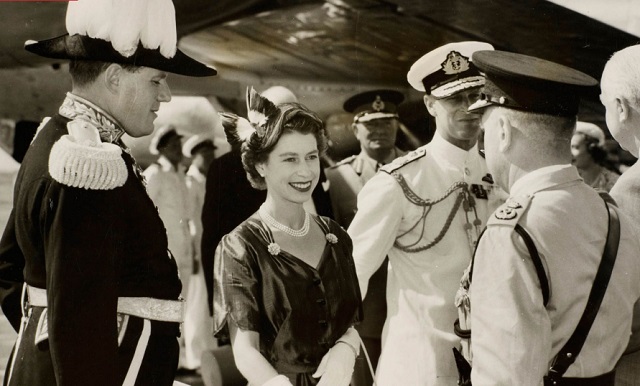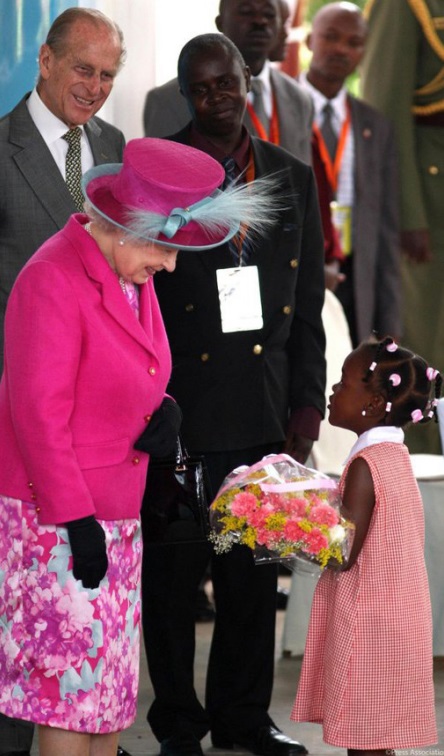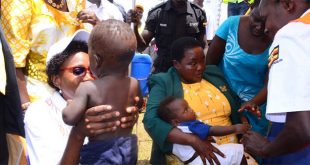
Interesting facts on her connection to Uganda
SPECIAL FEATURE | THE INDEPENDENT | Queen Elizabeth II, the United Kingdom’s longest-serving monarch, has died aged 96. She died on September 08 afternoon at her estate, in Balmoral in Scotland where she had spent most of her last days.
The Queen came to the throne in 1952 and had reigned for 70 years.
Her son, now King Charles III, said the death of his beloved mother was a “moment of great sadness” for him and his family and that her loss would be “deeply felt” around the world.
He said: “We mourn profoundly the passing of a cherished sovereign and a much-loved mother.
“I know her loss will be deeply felt throughout the country, the realms and the Commonwealth, and by countless people around the world.”
Two days before her death, in her last public ceremony, the queen appointed Liz Truss as the 15th prime minister of her reign. Photographs from the event show her looking frail and using a walking stick but still smiling. Her death sent shock around the world. Most people, especially heads of state and government – including from former British colonies were respectful in their reactions to the death of the monarch.
In Uganda, many recalled the Commonwealth Heads of State and Government Meeting (CHOGM) when President Museveni hosted the queen and other leaders in Kampala from November 21–24, 2007. Many were captivated by the Queen’s sense of fashion.
On November 23, it was reported that the Queen, arrived with the Duke of Edinburgh, the Prince of Wales, and the Duchess of Cornwall, wore a unique evening gown for the traditional banquet held during the CHOGM at the Serena Hotel in Kampala.
For the occasion, experts recall, the Queen wore a unique evening gown. The top of the dress featured white floral appliques, while the skirt was a shimmering silvery-white. She wore silver shoes and carried a matching bag, and she pinned the star of the Order of the Garter on her bodice.
Continuing the sparkling theme, the Queen wore major diamonds with the dress. The highlight of the ensemble was the Girls of Great Britain & Ireland Tiara, an heirloom jewel that was one of Queen Mary’s wedding gifts in 1893. The Queen received the tiara from her grandmother as a wedding present in 1947.
With the tiara, the Queen wore her Antique Girandole Earrings and the necklace from the Nizam of Hyderabad Suite. The necklace was lost a bit in the complicated neckline of the gown.
The queen also visited Mildmay Centre, a hospital for children with HIV and the Parliament of Uganda.
The Queen and Duke of Edinburgh also visited Kitante Primary School, Kampala, on the last day of the visit. The school is located near the British High Commission in Kampala and the Queen’s government pledged to support it.

Queen of Uganda
But those historically inclined, recalled how Uganda was the first country that Queen Elizabeth visited on the African continent. She had earlier visited Kenya as a princess and left as the Queen.
Her Uganda visit was from April 28–30, 1954 when she was hosted by Sir Andrew Benjamin Cohen who was Governor of Uganda from 1952 to 1957.
During the visit, the Queen commissioned the Owen Falls Dam power station on the River Nile in Jinja. At the time, the station had only two generation units of 15MW each.
The Kazinga National Park, in the western Uganda, was also renamed Queen Elizabeth National Park in 1954 to commemorate her visit.
She also stayed at Ripon Falls Hotel, which was one of Uganda’s first classy hotels located along Nile Crescent Avenue opposite present day Jinja Sailing Club. The Ripon Falls Hotel buildings remain but are rundown residence of the city’s low income earners.
When the Uganda Independence Act, passed by the Parliament of the United Kingdom in 1962, transformed the British Uganda Protectorate into a sovereign state on 9 October 1962, Elizabeth II became the Queen of Uganda as well as the head of state of Uganda. This was because Uganda was an independent constitutional monarchy. The queen was its head in the same way, she was the sovereign of other countries in the Commonwealth of Nations, including the United Kingdom.
Her title was Elizabeth the Second, by the Grace of God, Queen of Uganda and of Her other Realms and Territories, Head of the Commonwealth.
The Queen’s constitutional roles were delegated to the governor-general of Uganda. He carried out duties on her behalf in Uganda. The supreme central legislature became the Parliament of Uganda, consisting of the monarch and the National Assembly.
That is why, during the independence celebrations in 1962, the Duke of Kent who represented the Queen opened Uganda’s first parliament and gave the Speech from the Throne on the monarch’s behalf. In his speech at the formal opening of the National Assembly, the governor-general said that the Government of Uganda recognised Elizabeth as the head of the Commonwealth and as queen of independent Uganda.
This was a purely ceremonial title that isn’t recognised nor known by the majority of Ugandans. This situation lasted only one year from 1962 to 1963.
The Parliament of Uganda amended the constitution in 1963, and on 9 October that year Uganda became a republic within the Commonwealth, with a president elected from among the kings of the constituent sub-national kingdoms and the constitutional heads of districts as its head of state.

Uganda reacts
In Uganda, the first major reaction to the news of the Queen’s death was about President Museveni, out of respect for the death of the monarch, cancelling a trip to London, the capital of England and the UK.
Museveni was scheduled to take part in the 50 years commemoration of the expulsion of our Indians by the late former president of Uganda Gen. Idi Amin Dada in 1972. This event was cancelled.
It was also reported that Museveni was also to attend the UK-Uganda trade summit on Sept.10 at Park Plaza London. Initially it was speculated that the event, billed as a trade and investment showcase, would be cancelled.
But the organisers, announced that despite this very sad occasion of Queen Elizabeth II passing away, the Convention would go ahead as planned and offer an opportunity to remember the rich history that binds Great Britain and Uganda.
According to their official website, the UK-Uganda trade summit aims to promote and facilitate trade between Uganda and UK, create a platform for trade, business and investment between Uganda and Europe (UK) and promote and facilitate access to trade opportunities in Uganda (East Africa) for Ugandan and European (UK) investors, including one-to-one meetings.
In a sign of the queen’s longevity and impact over decades, 78-year old Museveni recalled that he first heard of the queen when he was a young boy of eight years. The President narrated how his maternal grandmother, Rusi Bakyira, showed him a photo of the newly enthroned queen in 1952.
Museveni said his grandmother said: “Omugabekazi omusya, n’akaishikyi kato” ( meaning “the new Queen is a young girl”). The queen was 26 years old then.
Museveni said he has since then followed the queen’s leadership journey through the media initially and, later on, through direct interaction in CHOGM meetings.
“I salute her contribution to the Commonwealth,” said Museveni in a condolence message posted on Twitter.
“During the 2007 CHOGM in Uganda, we were happy to host the top leaders of the British Royal family. These were: Her Majesty the Queen, her husband,” he said.
He fondly recalled how in 1987 – just a year after he took power in Uganda, she received him at Buckingham Palace and how she later steered him and then-Kenyan president Daniel arap Moi to warm their frosty relationship.
“In her use of the soft power she possessed, (she) forced the late Mzee Arap Moi and myself to sit on the same dinner table with her presiding in spite of the tension that existed between Kenya and us at that time,” he said.
President Museveni’s son, Lt. Gen. Muhoozi Kainerugaba attended the Royal Military Academy in Sandhurst and has often shown a fondness for the Queen, describing her as his first commander in chief.
Upon getting news of her death on Sept.08, Gen. Muhoozi who is Senior Presidential Advisor for Special Operations and UPDF Commander of Land Forces, tweeted his sadness.
“Very sad to hear about the passing of Her Majesty Queen Elizabeth II. My condolences to the royal family, the British and Commonwealth peoples. She was an anchor of the English-speaking world and a commanding presence on the world stage. May she Rest In Peace.”
Farther in the East African region, President Paul Kagame of Rwanda who is the current chairperson of the Commonwealth which the queen headed sent condolences.
“In this moment of sorrow at the passing of Her Majesty Queen Elizabeth II, we recall her 70 years of stewardship of the Commonwealth of Nations,” he tweeted on Aug.8, “The modern Commonwealth is her legacy. I extend my deepest condolences to His Majesty the King, Her Majesty the Queen Consort, and the entire Royal Family, as well as the people of the United Kingdom and the Commonwealth.”
Out-going President of Kenya, Uhuru Kenyatta, commended the queen for her self-less service.He said he had received the sad news of her death with great sorrow and a deep sense of loss and noted Kenya’s close ties with the queen.
“Her Majesty Queen Elizabeth II was a towering icon of selfless service to humanity and a key figurehead of not only the United Kingdom and the Commonwealth of Nations where Kenya is a distinguished member but the entire world,” he said.
Elizabeth, then a princess, was on a visit to Kenya in February 1952 when she received news of her father’s death while staying at the Treetops hotel, a remote game-watching lodge in the Aberdare forest.
Kenya was the first stop on the tour of the Commonwealth she had embarked on with her husband, Prince Philip, in place of her ill father.

Mixed legacy
Elsewhere on the continent, the reaction to the queen’s death was mixed.
South Africa’s President Cyril Ramaphosa on Aug.08 expressed his “profound and sincere condolences” over the death of Queen Elizabeth II, in a statement addressed to the new king, Charles III.
“Her Majesty was an extraordinary and world-renowned public figure who lived a remarkable life. Her life and legacy will be fondly remembered by many around the world,” Ramaphosa said, “The Queen’s commitment and dedication during her 70 years on the throne remains a noble and virtuous example.”
But the leader of the South African opposition party, the Economic Freedom Fighters (EFF), Julius Malema, said the queen’s death was “good riddance” as the monarch serves as a reminder of a very tragic period in the history of Africa. Malema said his party would use her passing to highlight what it termed as her contribution to a tragic period in South Africa, a former British colony, and Africa’s colonial history.
“Elizabeth Windsor, during her lifetime, never acknowledged the crimes that Britain and her family in particular perpetrated across the world. In fact, she was a proud flag bearer of the atrocities because during her reign,” Malema said.
The UK and Queen Elizabeth have had a tricky relationship with South Africa. Elizabeth first visited the country in 1947 in the company of her family. It was then the she made the famous speech dedicating her life to the Commonwealth in Cape Town.
“I declare before you all that my whole life, whether it be long or short, shall be devoted to your service and the service of our great imperial family to which we all belong,” she said.
But a year later in 1948, National Party of South African, introduced the apartheid system (meaning `apartness’ in Afrikaans) which sanctioned the racial segregation and economic discrimination against non-whites. As queen, Elizabeth II condemned the apartheid regime and kicked South Africa from the Commonwealth in 1961. It was only allowed back in 1994, after their first democratic and multi-national presidential election of anti-apartheid icon Nelson Mandela.
But critics insist, Queen Elizabeth also looted much of the country’s fine jewels and resources. They point at how the British monarchy has held on to ‘The Great Star of Africa’, a 530-carat gem mined in South Africa in 1905. It’s estimated to be worth $400 million.
****
 The Independent Uganda: You get the Truth we Pay the Price
The Independent Uganda: You get the Truth we Pay the Price




She died September 8th not August 8th as stated in paragraph 1.
Rachel, thank you for noting that. We will correct that ASAP.